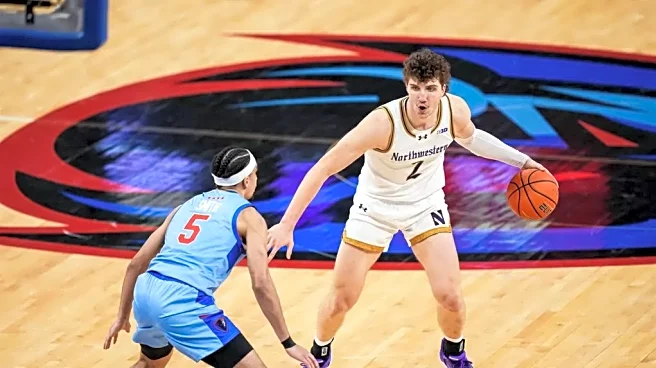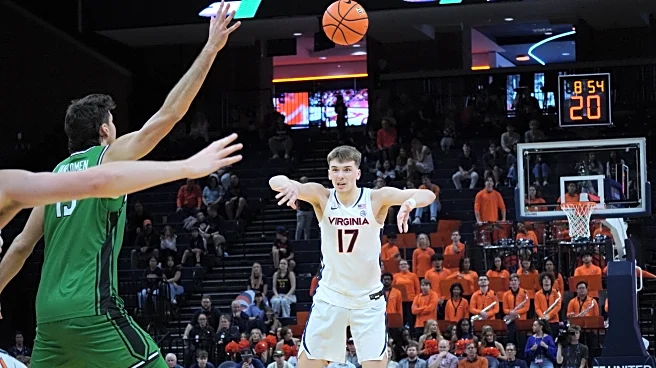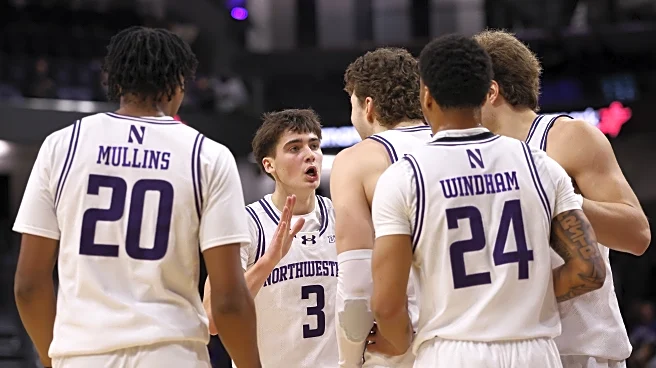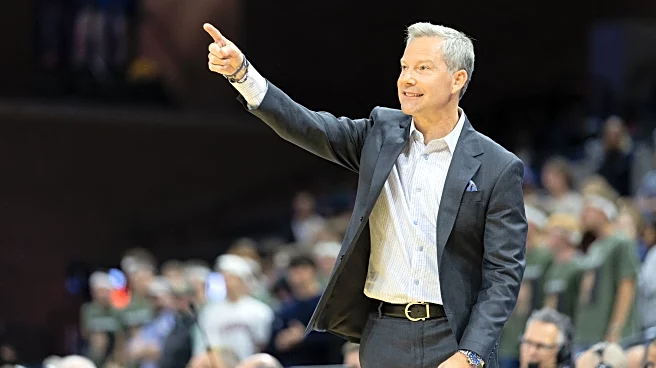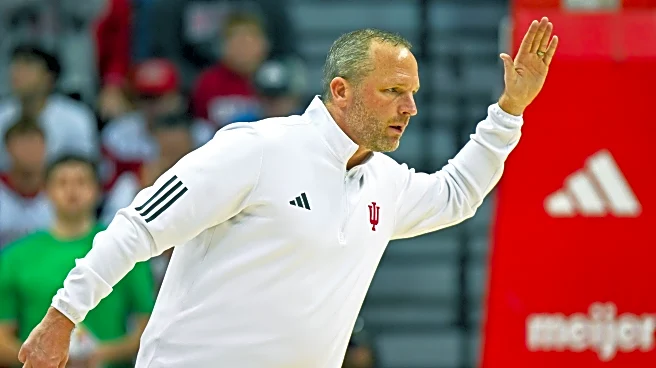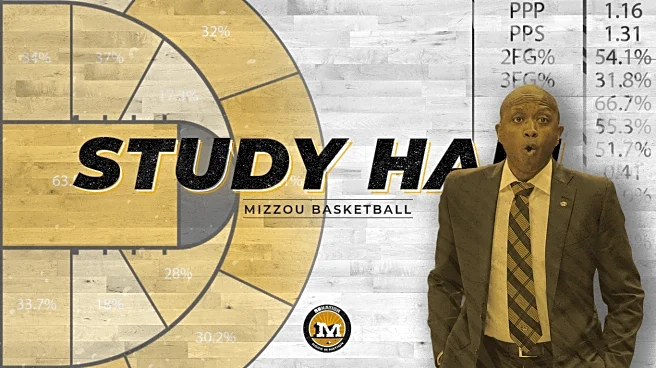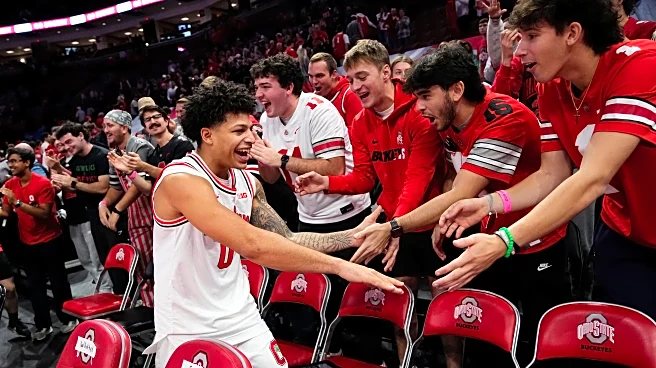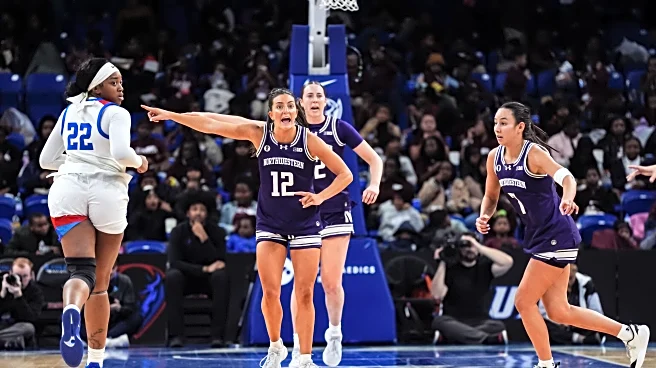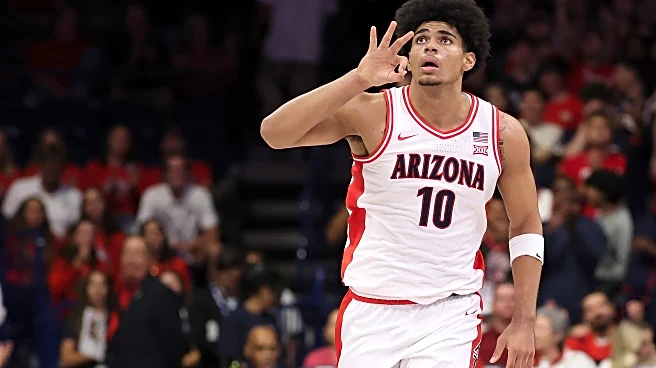We’re doing things a little differently this week. Northwestern only played one game since the last article, at DePaul, which was broadcast on TruTV. Because the network falls in the CBS family instead
of the FOX family, the full game replay isn’t accessible in its usual place and, as it turns out, won’t let me pull clips. So instead of the usual film breakdown, I’m going to take a look at some numbers and notable early season trends from the first four games, courtesy of CBB Analytics.
Defense
I don’t want things too out of sorts for my loyal readers, so we’re going to keep the same format. Let’s start with defense.

Here’s the heat map from Northwestern’s defense last year. Overall, they defended pretty well, but they struggled somewhat on the perimeter and gave up a lot of 10-15 footers that were great looks, hence why there is a lot of red peppering the middle of the floor.

Looking at this year so far, two things jump out at me immediately. Opponents are shooting notably less often and more poorly from the midrange compared to years past. I apologize if I’m beating a dead horse here, but Northwestern has switched up their coverage to a primarily drop coverage defense in all screening actions, instead of the hedging system utilized back when Matt Nicholson anchored the paint. I’ve shown clips of how the defense looks different on film in prior columns, but here the stats really pop out.
Northwestern has allowed just 31% shooting on midrange twos outside the paint so far this season, and a paltry 18% (99th percentile) on paint twos that are classified as not “at the rim”, which is within 4.5 feet of the basket. Last year, the ’Cats allowed a 39% on midrange twos, three percentage points above the national average. In the paint, they fared better, but their 38% hit rate allowed still doubles the production against them so far this season. Now naturally, better opponents will force regression on their currently stellar numbers. But with a drop coverage system, the best shot blocker on the floor (Arrinten Page), lives at the free throw line for the majority of the possession and therefore has a much easier time contesting these shots. Nicholson, when hedging, stretched above the three point line and charged into the paint, but didn’t spend much time patrolling the middle of the floor as a result.
The second thing that stands out is the corner three-pointer. The corner three is widely regarded as the easiest three pointer in basketball for a few reasons. Firstly, it’s the closest one to the hoop, by distance. Second, a corner three attempt is more likely to be open than an above-the-break three, because it usually comes off of a drive-and-kick, as opposed to potentially a pull-up three in isolation. Last year, Division I teams shot 35.3% on corner threes compared to 33.3% above the break. Northwestern’s defense was slightly worse than average on corner threes last year, allowing slight bumps in shooting percentage on slightly more attempts than the norm. This year, however, they are allowing a disgustingly low 22% from three in the corners, on below average attempts.
I’m going to cheat a little by including some film from Cleveland State, because this column would feel incomplete without at least some tape.
Look at the veracity of the closeouts by both Angelo Ciaravino and Jayden Reid on their respective corners. Both of them close hard, knowing that if the driver gets by them, Martinelli is flashing hard to help. The other thing to notice is Arrinten Page’s activity. He showcases his mobility on this possession and while he loses his gamble for the steal, Northwestern wants to put him in position to use his athleticism on defense while hiding his relative lack of strength for a big man. Instead of using him as the paint repellent, they put Martinelli way off his man in help and allow Page to cover the middle of the floor. (It is worth noting that CSU’s Josiah Harris, who Page was guarding, could shoot, which is part of why he’s so far away from the rim. But this has been a theme throughout the season.)

Without getting too deeply into the weeds, here’s Northwestern’s heat map from last November to show the difference in the shots they’re forcing even against similar competition. The red in November is the same as the red from all season, near the top of the painted area and in the corners.
Offense
First, a shameless plug for my tweet, which included my favorite statistic I’ve found on Northwestern’s offense thus far. This is the first half of the offensive analysis this week, which zooms in on Tricky Nick’s production.
In addition (and correlated) to the amount of buckets Martinelli is getting assisted on, there’s another reason he’s able to be so efficient while the offense flows better and he gets fewer touches.


These are Nick Martinelli’s shots based on how much time was on the shot clock when he attempted them. Ignore the segment from 10-20 seconds on the clock. Those numbers are near identical to each other in attempt rate, although he’s shooting a good deal better on them so far. Instead, focus on the early clock shots (20-30 seconds on the shot clock, right-most column) versus the late clock shots (0-10 seconds on the shot clock, left-most column). So far this season, Martinelli has taken just four shots in late clock situations, good for 9% of his attempts. Last season? Almost 30% of his attempts came as the clock neared its finish. Harken back to then if you will, and try and picture this all-too-common scene from a season ago. Nick Martinelli, pounding the air out of the ball as a double team comes. Nobody on the perimeter moves a muscle and he eventually forces up a contested floater, which sometimes went in. It wasn’t pretty, even when it was effective.
Now compare the early clock numbers. Martinelli has taken 12 shots in early clock situations, three times as many as late clock and about 27% of his total output. All of those numbers in the green are percentiles, indicating that he’s above average in how many early clock shots he’s getting. Last season shows a lot of red, at just above a 10% attempt rate.
You may be wondering why the time he’s taking shots in the shot clock matters whatsoever. The answer is shot ease and quality.
Early clock shots are the plays that come in transition. Those are the rim runs, the trail threes and the easy layups. Those are the times when Martinelli can get high percentage shots while facing someone smaller or, at the very least, not a double team. It’s a product of Northwestern playing faster, and it’s decidedly a good thing for his game. Martinelli was just average on efficiency last year, in part because he got few easy looks and faced as many double teams as anyone in the country. Now, he’s getting layups and wide open threes, and in late clock situations the ball is moving at a high level, resulting in better shots even when the ‘Cats aren’t in transition (and mostly three-point attempts, but that’s a story for another day).
Oh, and Martinelli is 9-of-12 on his early clock shots. For reference, he shot just 39.4% on late clock shots last year. If these time-of-possession attempt rates stay about the same, Martinelli is exchanging his 39.4% field goal percentage for a 75% mark on similar volume. That’s how you take another leap after leading the league in scoring a season ago.
(Author’s note: For the first time in this column’s history, there will be no Chris Collins clip. I’m torn up about it, but what are you gonna do?)
